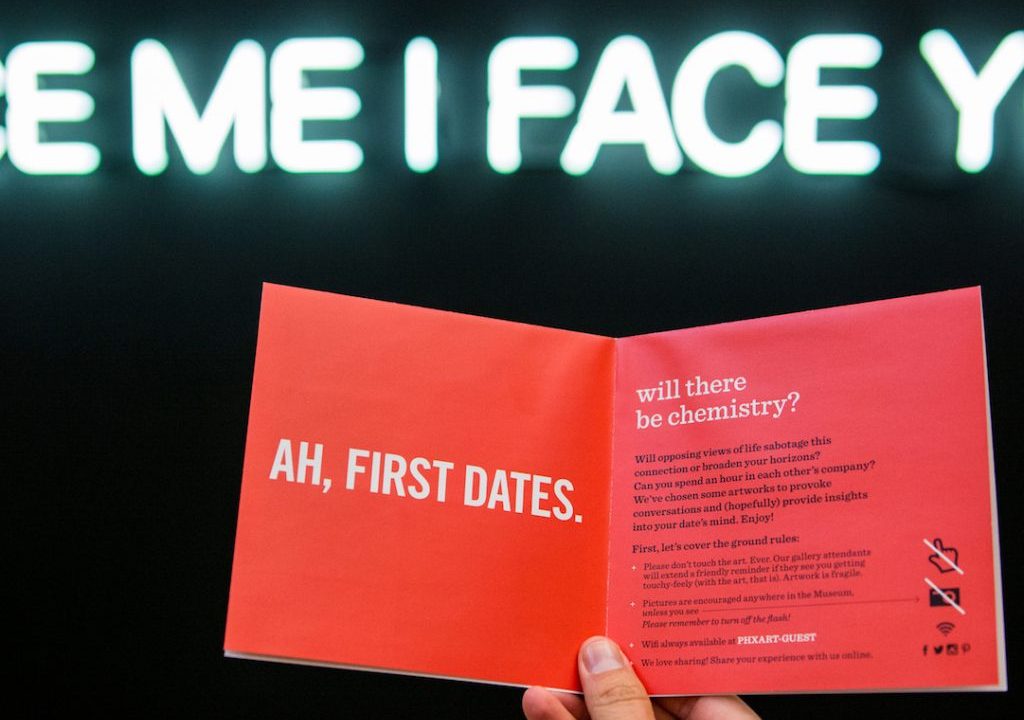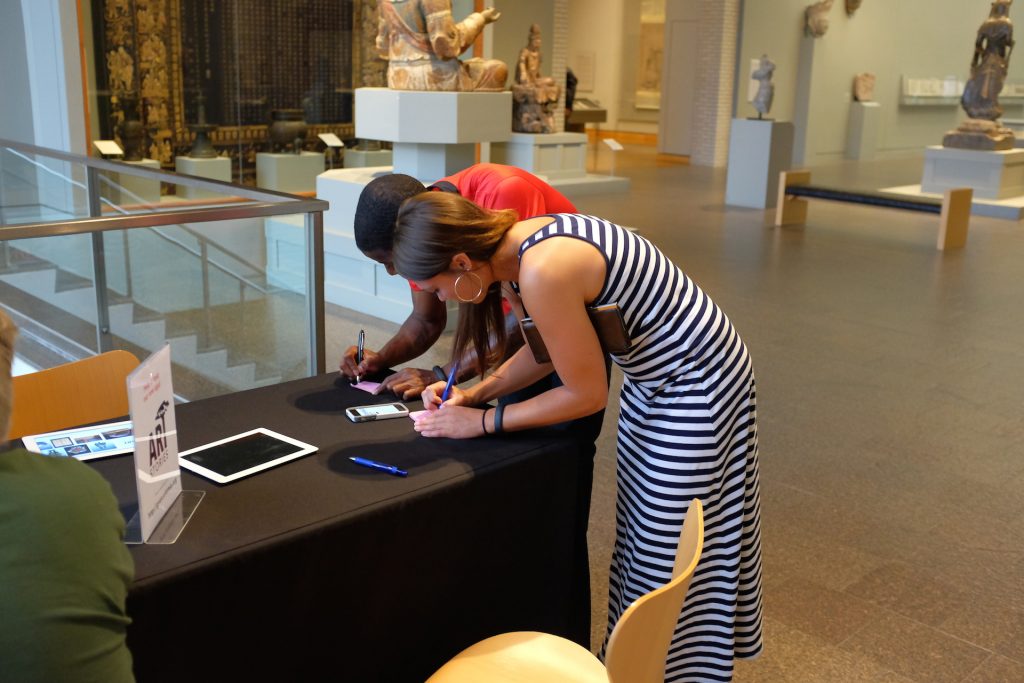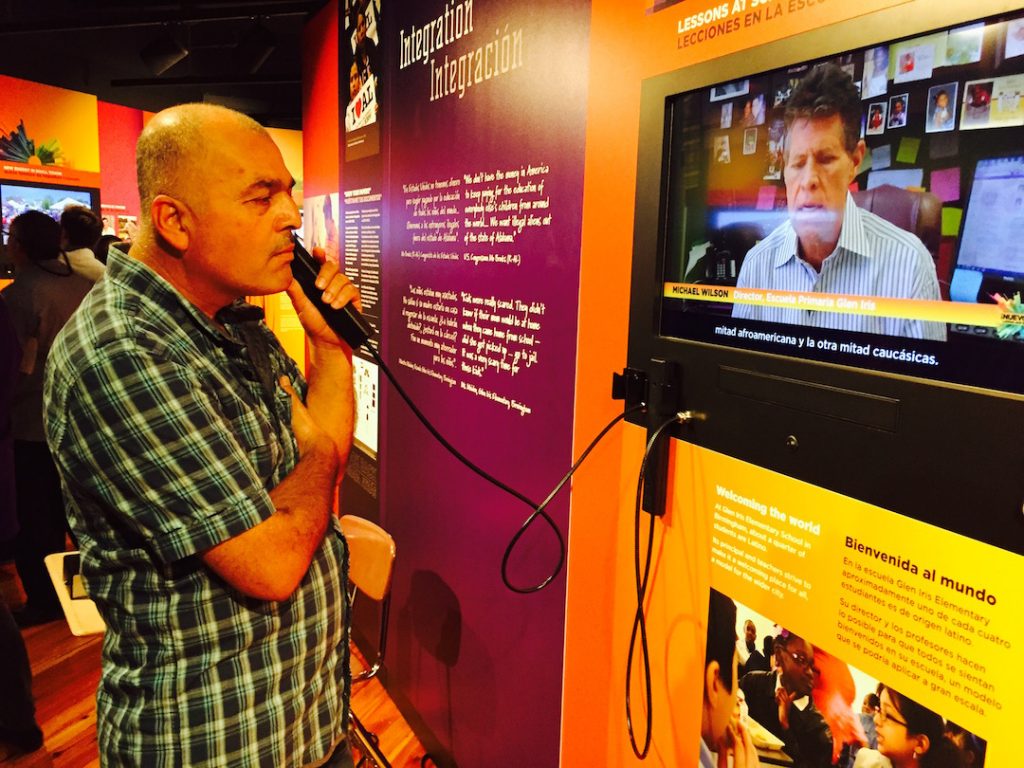
“If you’re creating things, you’re doing things that have a high potential for failure, especially if you’re doing things that haven’t been done before. And you learn from those things…failure is another word for experience.”George Lucas
Both for-profit and nonprofit organizations increasingly recognize that failure is a necessary part of a successful design process. It isn’t easy to adopt this approach when “failing” is conflated with “being a failure,” but we are coming to realize that blanket negative characterizations of failure damage us as learners, workers, organizations, and as a culture. In a time of rapid social, technological, and economic change, organizations have to try new things in order to succeed, and such innovation requires a tolerance for risk. As museums’ business models are experiencing profound disruptions, this field in particular needs to be comfortable with positive failure, but museums need encouragement, tools, and positive feedback if they are to buck the long tradition of perfectionism that has characterized the sector.
Creating a climate of productive failure requires a workplace culture that values individual experimentation and input, but the characteristics of innovative organizational culture are often at odds with traditional, command-and-control management structures. Organizations, particularly those with entrenched hierarchical structures, are finding they need to adopt frameworks that support experimentation and risk taking. Recent decades have seen the proliferation of a wide variety of systems, methodologies, and approaches that support taking small, productive risks and learning from small, rapid failures. Entrepreneur and author Peter Sims documents how large established organizations like Amazon, Pixar, Google, Hewlett Packard, and the US Army succeed via making “little bets”—low-risk actions to discover, develop, and test an idea—in support of ambitious long-term goals. At the other end of the spectrum, the Lean Startup Movement is designed to help new businesses find their market niche via continual testing. The principles of Scrum—an iterative, incremental approach to software development designed to deal with the unpredictable, shifting needs of the end user—have spread within organizations as other departments emulate the successful practices of their IT staff. And the Scrum approach has diffused to other fields as people with technology backgrounds become core staff and leaders in a variety of sectors.

WHAT THIS MEANS FOR SOCIETY
To prepare learners for the 21st-century workplace, education is shifting to privilege critical thinking, research skills, creativity, perseverance, adaptability, and teamwork over rote memorization of facts. This transition will require a cultural shift in education toward fostering exploration, curiosity, and experimentation, all of which inevitably involve “failing” as a productive part of learning new things. In the future, a good student’s report card may be sprinkled with Fs that laud little failures.
Even as society struggles with the impact of excess screen time for kids and assesses the potential for video games to foster violent or antisocial behavior, we increasingly recognize that games, particularly digital games, are a means of giving continuous feedback, helping kids see failure as an inevitable and unremarkable part of “leveling up.” And we are realizing that the characteristics of productive failure in games could be grafted onto other areas of endeavor: giving continuous feedback; making failure private; normalizing failure as an expected part of a process; and immediately presenting a “player” with the chance to try again.
A bias against failure in research publication is holding back progress in a variety of fields. Not sharing the results of thousands of experiments that “fail” —i.e., generate negative results—obscures important findings, creates bias in metadata studies, and wastes the time of researchers who replicate experiments they didn’t know had already taken place. That may mean, for example, repeating medical trials that subject volunteers to treatments that are already known (by someone) to be ineffective. Individual journals and professional societies are trying to crack down on publication bias, but there is no simple fix. One study conducted in 1987 found that suppression of negative results isn’t primarily due to editorial decisions: it’s a result of self-censorship by researchers who didn’t even write up and submit papers describing their work. In other words, bias against failure is itself a failing of academic culture.
Valuing failure can amplify or counteract concurrent social trends. User-centered design creates a meaningful role for the public at a time when participation is increasingly valued as part of a cultural experience. And learning to accept failure as part of a mutual process of learning what works and what doesn’t work in our complex society can help to counteract increasing cultural and political polarization.
WHAT THIS MEANS FOR MUSEUMS
Museums, as a sector, share a culture of perfection that places large bets on getting a product—whether an exhibit, program, or building—right the first time. This culture is often rooted in traditional, hierarchical management structures that evolved in a time that valued authority and control over collaboration and creativity. Museums that decide to move away from dysfunctional perfectionism have to work consciously to change an organizational culture that discourages risk taking. A culture of continuous improvement can’t simply be isolated in a new department or grafted onto traditional structures—it requires fundamental shifts in a museum’s ethos, including new forms of leadership and management.
Museums are at risk of lagging dangerously far behind the rapid changes shaping audience, culture, and technology. The traditional time frame for major projects is too long for truly responsive design. If exhibits and publications take five to 10 years to produce, and if institutions take another one to three years to collect evaluation data, operations will only improve on decadal cycles.
“Failure-based” design processes incorporate early input from the end user. For example, one methodology being widely adopted in the cultural sector is design thinking: a set of principles that include empathy with end-users, rapid prototyping, and a tolerance for failure. This is a welcome counterbalance in organizations such as museums, orchestras, or opera companies that have a long history of producing performances, exhibits, and programs that seem perfect to the staff or funders, but may not resonate with audiences. Recruiting the public to test prototypes is not just a way to improve the final design—it is itself a valuable form of engagement that can humanize the museum and make the audience feel invested in the outcome.
Museum funders are beginning to recognize the strength of “small bets” as a path toward innovation. In 2011, the Institute of Museum and Library Services started offering Sparks! Ignition Grants to support one-year, rapid prototyping projects with grants of $5,000 to $25,000. This program has now been rolled into IMLS’s National Leadership Grants for Museums, and the maximum award increased to $50,000.

FURTHER READING
THE ART OF FAILURE: THE IMPORTANCE OF RISK AND EXPERIMENTATION. NATIONAL ENDOWMENT FOR THE ARTS 2014, #4. THIS ISSUE PRESENTS EDITED FIRST-PERSON INSIGHTS FROM INDIVIDUAL ARTISTS, ENTREPRENEURS, AND CRITICS ABOUT THEIR RELATIONSHIP WITH FAILURE. AS THE NEA DESCRIPTION OF THE PUBLICATION SAYS, “TAKEN TOGETHER, THESE VOICES SHOW THAT MAYBE—JUST MAYBE—FAILURE ISN’T SUCH A DIRTY WORD AFTER ALL.”
At Museums and the Web 2016, Douglas Hegley, Meaghan Tongen, and Andrew David presented “The Agile Museum”—a paper describing how the Minneapolis Institute of Art is creating an agile work environment. This case study emphasizes the need to change leadership and management practices in order to support a culture of rapid iteration and experimentation.
The website Design Thinking for Museums, edited by Dana Mitroff Silvers, shares case studies, blog posts, and resources. It grew out of a 2012 partnership between the San Francisco Museum of Modern Art and Stanford University’s Plattner Institute of Design, and offers a compendium of links to free online toolkits.









One thought on “Failure Failing Toward Success: The Ascendance Of Agile Design”